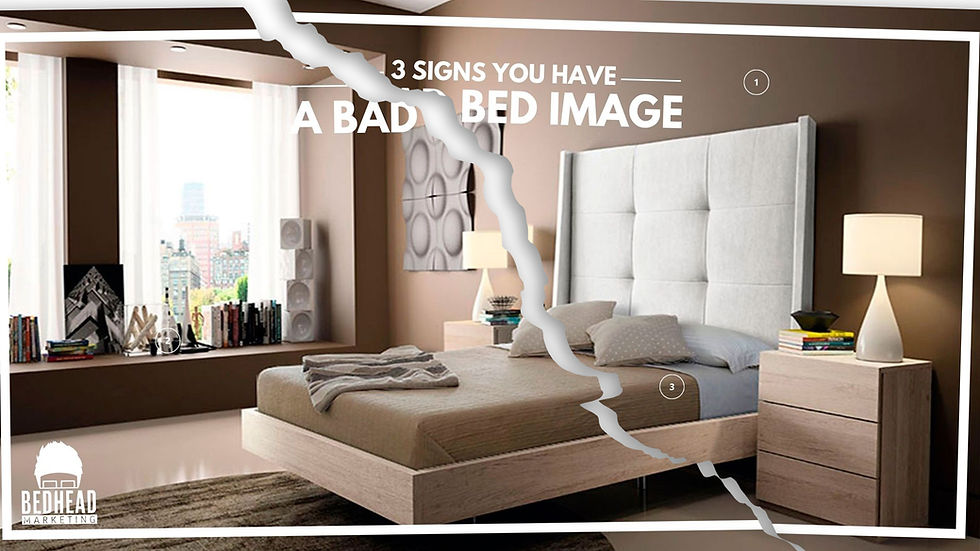3 Signs You Have a Bad Bed Image
- Brandon Bain
png.png/v1/fill/w_320,h_320/file.jpg)
- Sep 21, 2022
- 3 min read

The fastest way to tank a product launch, get bad imagery. A picture is worth a thousand words, and when it comes to selling mattresses, that couldn't be more true. The image you use on your website, social media, and marketing materials is often the first, and sometimes only, thing potential customers will see of your product. As such, it's important to make sure that your mattress images are top-notch. Here are the five most important aspects of a great mattress image.
1. (Poor Quality) The Image is Low Resolution
In order for your images to look sharp and clear on high-resolution screens, you need to ensure that they're high resolution themselves. This means having an original file that's at least 1200 pixels wide. Images that are smaller than this run the risk of looking pixelated and Grainy, two things you definitely don't want potential customers to think about your mattresses!
Recommendation: Make sure of is that the colors in the image are an accurate representation of the colors of the actual product. This might seem like a no-brainer, but you'd be surprised how often images end up looking different in person than they do online.
2. (Imperfect Product) The Product Not in Great Condition
If you've shipped your product to be photographed, chances are that it's likely not going to arrive in perfect condition. Although small imperfections like a subtle tape edge bend may add character, the reality is that too much can be distracting and an immediate turn-off.
Recommendation: Utilize 3D digital renderings instead of shipping products. This is faster, more affordable, more flexible, eco-friendly and can present the mattress in its A+ state.
3. (Wrong Setting) The Image Doesn't Convey the Right Message
The art of creating consistent, accurate storytelling is a nuance that most overlook, but each product image should fit within a progressive story of the product line-up. In short, use the right scene for the level of bed. The room scene is intended to imply the level of quality of the mattress, so using the same room or the wrong room for the quality of the bed (as it relates to other products in the collection) creates confusion for the buyer.
Recommendation: Storyboard the entire collection by laying out which bed belongs in each room before producing the images and make sure to be consistent with theme. For example, if you're selling "Handmade beds for Royalty" then each room should look like it belongs in a castle, but with varying levels of luxury in each room to represent the mattress.
BONUS 4. (Inaccurate Imagery) The Image Doesn't Accurately Depict the Product
There are a number of ways that a product image can distort the reality of an image. If the proper specifications are not provided to the 3D artist, or the photographer is using angles to make the mattress appear disproportionately larger, the image may not reflect reality. This causes confusion, distrust, and overall creates lower consumer satisfaction. Don't let your photographer "over-improve" the product in post production.
Recommendation: Photographers are incentivized to give you the best looking images they can, however this incentive system may not work to your merchandising advantage if they are inaccurate. Demand accuracy and consistency in your product images.
Creating stunning mattress images requires a complete understanding of not only graphics/photography, but also merchandising and marketing. However, high-quality photos are critical for showing potential customers exactly what your mattresses look like, boosting both conversions and customer satisfaction rates.



Comments